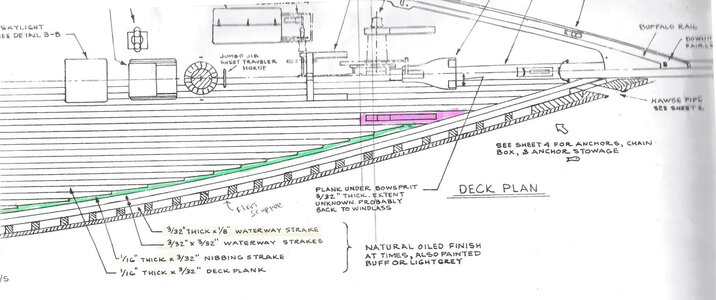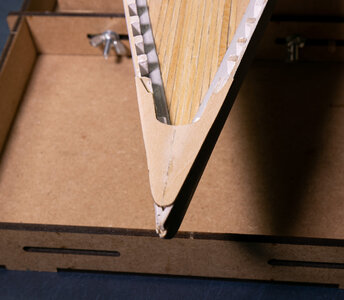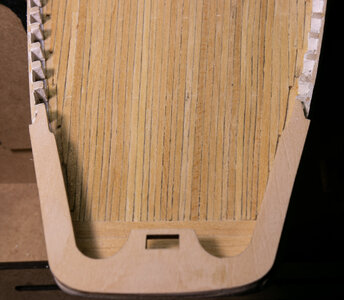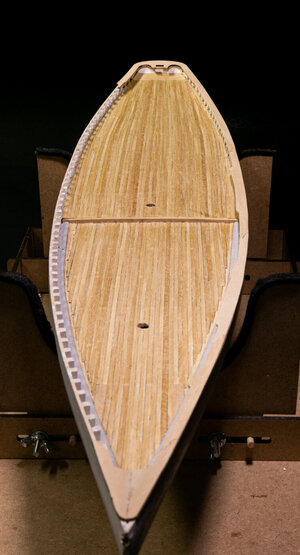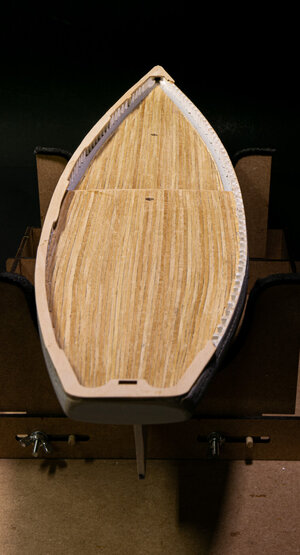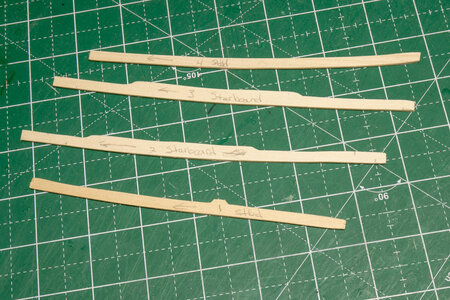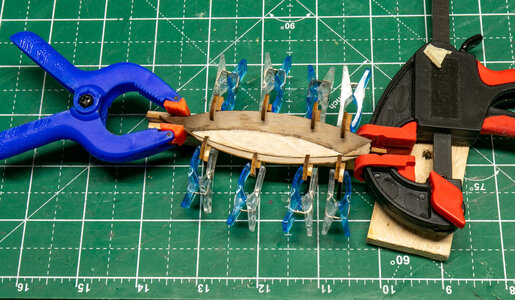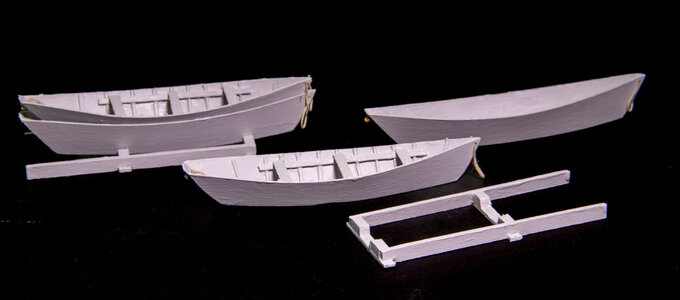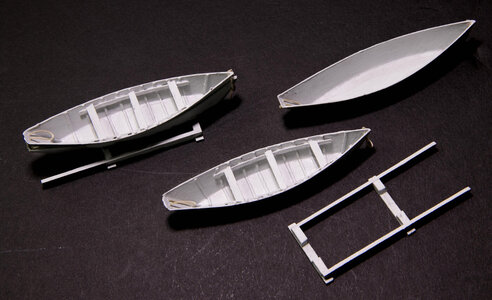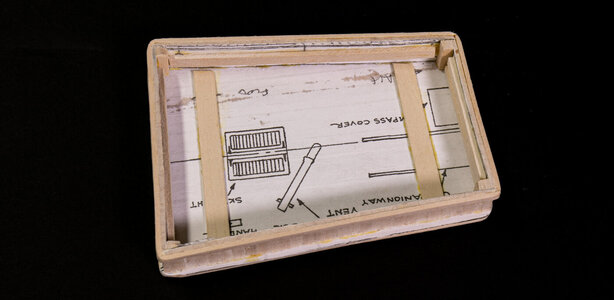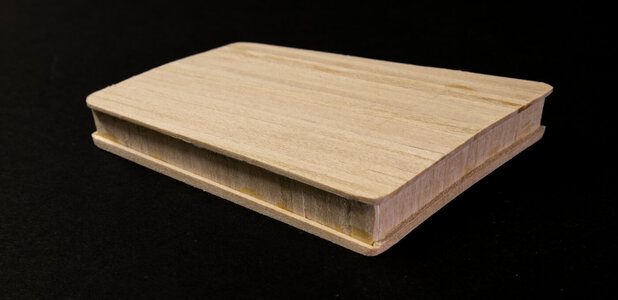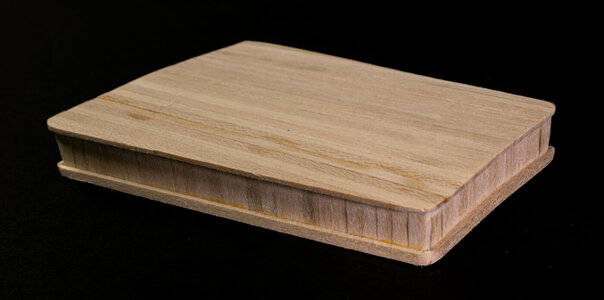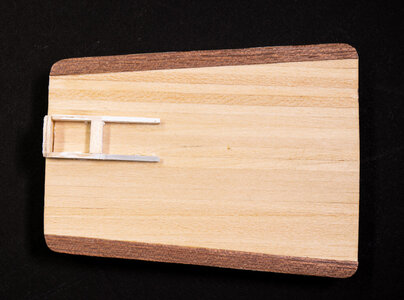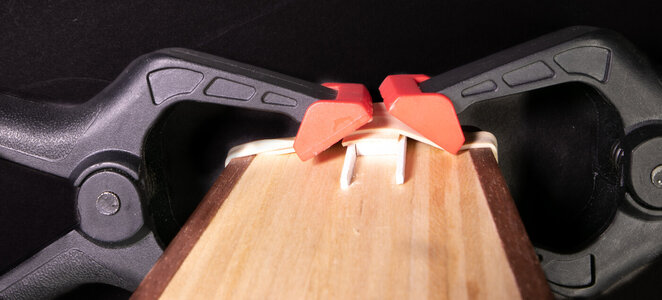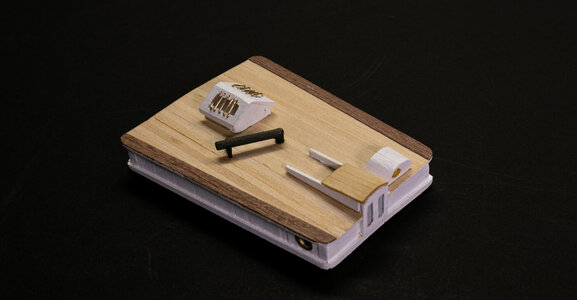Planking the decks!
Both halves of the deck have their own challenges. Planking the deck was done in a manner similar to the hull planking using modified binder clips as far out to the side as I could. Note the wide plank near the bow where some machinery will sit. Both the foredeck and the quarterdeck were nibbed. I had some trepidation about doing nibbing the planks, but it went fairly well. The aft-most part of the quarterdeck has the planks that taper to about 2/3 the width for the last 6 inches or so. They were tapered with a small plane (typically about 6 planks at a time). I will present the completed deck in a future post.
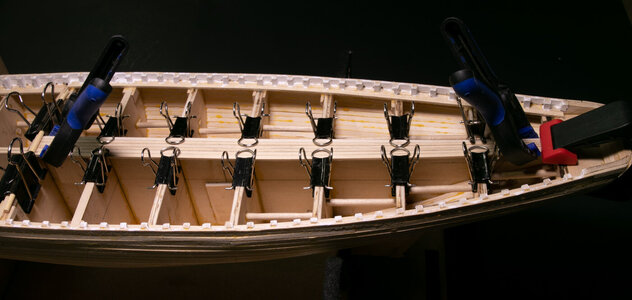
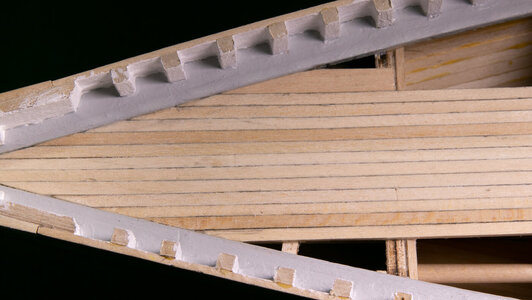
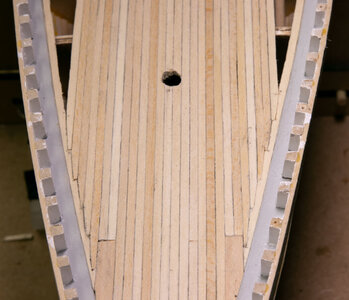
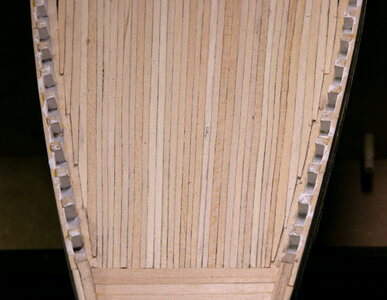
Both halves of the deck have their own challenges. Planking the deck was done in a manner similar to the hull planking using modified binder clips as far out to the side as I could. Note the wide plank near the bow where some machinery will sit. Both the foredeck and the quarterdeck were nibbed. I had some trepidation about doing nibbing the planks, but it went fairly well. The aft-most part of the quarterdeck has the planks that taper to about 2/3 the width for the last 6 inches or so. They were tapered with a small plane (typically about 6 planks at a time). I will present the completed deck in a future post.









